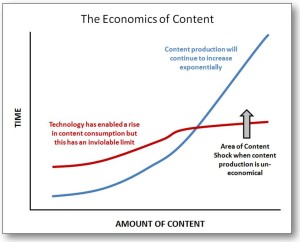We’ve all seen videos “go viral” – clips that seem silly or pointless that gain so much traction they end up being a talking point on the morning news. Of all the thousands of videos online, what makes certain ones gain so much attention?
There isn’t a formula that can make a video go viral, but there are some qualities that a lot of viral videos share which may contribute to their success.
Common qualities of viral videos
Many people have speculated what makes videos go viral, as can be in this post by Hubspot. And while it’s not an exact science, we’ve compiled our own list, based on what’s successful.
- Short video, quick scenes, create immediate interest
- Smart use of hashtags and tagging
- Play on emotions: humor, love, etc.
- Show something unique, creative, unexpected
- Play off something already popular
- Spontaneous, organic, or “real”
- Informative
- Interactivity
- Controversy (less often the case)
While not every viral video has all of these qualities, most have a combination of these traits that encourage sharing and therefore make them gain “viral” status. The video above, “Charlie bit my finger” is short, funny, cute, and feels spontaneous or “real.”
Our Viral Video Award-winning trailer, Ticknado, adopted many viral qualities from the original #Sharknado, which may have contributed to its success.
The most obvious trait Ticknado exhibits is the play on something that is already popular. Since many internet users were already looking up “Sharknado” clips and trailers, and the Ticknado trailer was tagged with “#Sharknado” hashtag, it became just a click away for viewers who were already interested in that type of video.
Ticknado was also funny, informative, and creative, while using quick scenes to keep interest throughout the video. This made it something that people would want to share with their friends.
The ALS Ice Bucket Challenge’s viral qualities
Perhaps the biggest hit of 2014 is the Ice Bucket Challenge. If you haven’t heard of it, which seems unlikely if you spend any time at all on Facebook, this challenge asks people to dump a bucket of ice water over their heads or donate $100 to foundations that research ALS (a degenerative nerve disease). You are then asked to nominate your friends to do the same.
Pete Frates, shown participating in the Ice Bucket challenge in the Vine above, suffers from ALS himself, and is the one who encouraged those who took the challenge to focus on this particular disease.
While this isn’t an example of one video that has gone viral, but rather a movement, this challenge is a prime example of harnessing the power of social media to gain awareness and, this case, raise money for research.
Inc.com broke down the reasons for this campaign’s success as a social media campaign rather thoroughly, but it can also be examined through looking at the qualities of viral videos.
Viral quality: Emotional response
The most important driving factor in this challenge going viral may be the emotional response to the videos. Individually, it is quite funny to see your friends doused in ice water, while collectively, people feel inspired to take part and help promote a good cause.
Everyone from celebrities like Justin Timberlake to your grandma to my 19-month-old daughter (see end of clip above) have taken part – encouraging many to want to get in on the action.
Viral quality: Interactivity
This challenge is built to grow exponentially. When one person is nominated, they nominate a handful of others, who nominate a handful of their friends – all the while, tagging each other and using helpful hashtags, like #StrikeOutALS and #IceBucketChallenge.
On top of that, being called out publicly and being given a 24-hour deadline creates a sense of urgency to make people follow through with the challenge. Many forgo the bucket of ice and make a donation, and many have donated regardless of whether they dump water on their heads or not.
In fact, according to NBC news, The ALS Association has collected $1.35 million, when during the same time frame last summer, they received $22,000. That’s more than 60 times more money for research.
Viral quality: Controversy
Perhaps surprisingly, this viral campaign has elicited some controversy. While many have been anxiously awaiting their nomination to take part, or even nominating themselves, there have been plenty of naysayers who criticize those who take part as not actually taking action against the disease but rather just want to publicly say they did something good and nominate their friends. Others criticize being so public about donating to charity.
Even this negativity toward the movement, however, has increased those talking about the challenge and ALS, looking up articles, and discussing the ethics behind what you should do or not do publicly online. Some controversy can, in fact, propel a viral phenomenon.
[social_share style=”circle” align=”horizontal” heading_align=”inline” text=”What made the Ice Bucket Challenge go viral?” heading=”Insightful? Share with your followers!” facebook=”1″ twitter=”1″ google_plus=”1″ linkedin=”1″ pinterest=”1″ /]
Have you done the Ice Bucket Challenge? What parts of this campaign might work for creating your own viral video or movement? Let us know what you think in the comments.
[cta id=”4824″ align=”none”]


